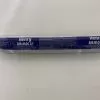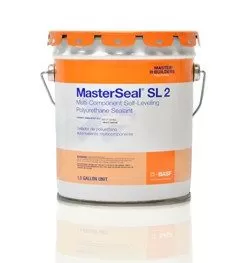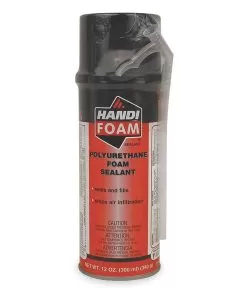Henry 925 BES 10oz Sealant For Construction
$8.94 – $12.52
- Suitable for use in construction joints up to 1 inch width, susceptible to vigorous movement of joint of +/-25%
- Use for Henry® air barrier, roofing and water-proofing systems as external joint sealant
- In applications for construction that are above-grade, it provides an alternative to moisture cure silicone and urethanes
- Provides extremely low VOC and excellent flexibility and weather resistance by using a silyl-terminated polyether polymer (STPE)
- Case Quantity : 24
Henry 925 BES Sealant 10.1oz Tube
Henry 925 tube BES Sealant is moisture cure, premium sealant/adhesive for use in construction joints susceptible to vigorous joint movement. This low odor, one-part, moisture cure, one-part product provides extremely low VOC, flexibility and exceptional resistance against weather by using silyl-terminated polyether polymer. It is compatible with latex based paints upon curing. This product can be used with Henry air barrier, roofing, waterproofing and flashing systems. Questions? Contact us
- Henry 925 tube Building Envelope Sealant
- Granted SWR Institute Certificate of Validation
- Meets Fed Spec TT-S-00230C, Type II, Class A
- Meets ASTM C920 Type S, Grade NS, Class 35
- Meets ASTM C719 ± 35%
Initial Set: 60-90 min at 77oF (25oC) Set Through: 24 hours 150-200 psi 40-50% psi 5 g/L925 BES Sealant is a moisture cure, premium construction joints sealant susceptible to vigorous joint movement. This moisture cure, low odor, one-part, product provides low VOC, excellent resistance to weather, and flexibility by using silyl-terminated polyether polymer. It is compatible with latex based paints upon curing. This product can be used with Henry® air barrier, roofing, waterproofing and flashing systems.
Complete the air barrier system with Henry:
Henry 16MR low temp air and vapor barrier
Henry Blueskin SA peel and stick flashing
Usage:
- Use for Henry® air barrier, roofing and water-proofing systems as external joint sealant
- For self-adhered air barriers, it builds an envelope sealant
- In applications for construction that are above-grade, it provides an alternative to moisture cure silicone and urethanes
- Suitable for use in construction joints with a maximum of 1 inch (25 mm) width susceptible to vigorous joint movement of ± 35% ApplicationSurface Prep: Ensure joints are sound, uniform, free from defects and foreign materials, and smooth. Ensure joints are free of frost, dry, clean, and free of all contaminants, such as coatings, sealers or curing compounds. Before use, test sealant on every different substrate by applying a bead and allowing it to cure thoroughly. Pull one end of the bead to test adhesive strength. Apply: Make a cut on nozzle to desired bead size and puncture inner seal. Apply sealant ahead of nozzle at a 45° angle. Joint width should be at least 4 times the anticipated movement. Sealant depth should be equal to the width in joints up to 1⁄2 inch (13 mm) wide, but not less than 1⁄4 inch (6 mm). Maintain a depth at 1⁄2 inch (13 mm) in joints wider than 1⁄2 inch (13 mm). For installation, the maximum joint width is 1 inch (25mm). Tooling is required to eliminate air bubbles and to aid contact with the substrate in horizontal and vertical joints.
| Weight | 1 lbs |
|---|---|
| Dimensions | 14 × 2 × 2 in |
| Colors | Black, Grey, White |
Related products
All Products
Control Joints
All Products
Aluminum
Customer Reviews
















